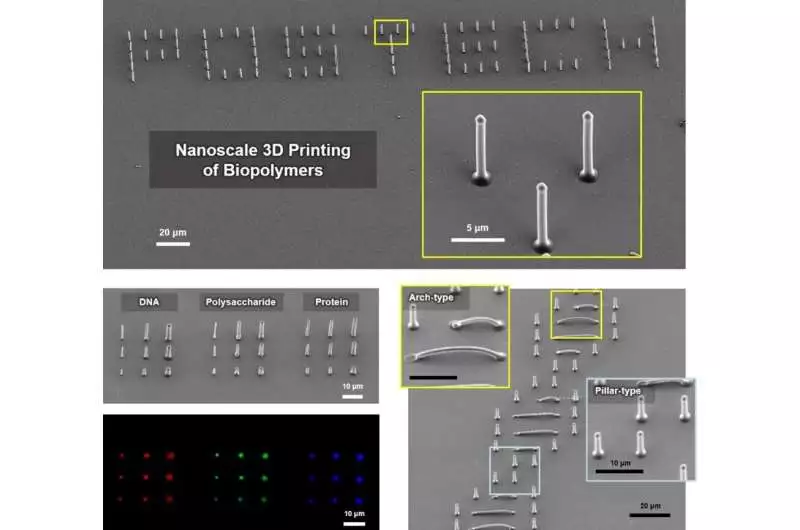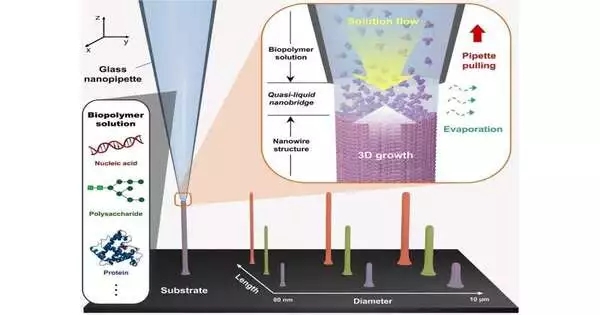A helpful method that has been widely applied in our lives, from artificial organ production to reconstructive plastic surgery, is three-dimensional (3D) bioprinting. However, due to their inborn rheological and structural characteristics, many biopolymers, including proteins, nucleic acids, and polysaccharides, are difficult to shape into a desired 3D shape at the submicron or nanoscale. Can 3D printing technology actually be used to structure different biomolecules in a free-form and high-resolution manner?
Professor Seung Soo Oh, Professor Emeritus Jung Ho Je, Dr. Moon-Jung Yong, and Ph.D., along with a group of researchers from the Department of Materials Science and Engineering at POSTECH, led the group of researchers. D. Candidates Un Yang and Byunghwa Kang have created a ground-breaking 3D printing technology that directly enables the precise writing and patterning of various biopolymers with full mechanical stability and functional integrity.
Their findings were published in Advanced Science.
The research team has revealed a novel 3D printing method that sequentially confines, evaporates, and solidifies a biopolymer-containing solution to maintain the folding structure and molecular function of different biopolymers.
“The significance of this research is that it demonstrates for the first time the possibility of printing 100% functionally and structurally active biopolymers in ultrafine 3D structures,”
Emphasized Professor Seung Soo Oh, the POSTECH team leader.
Regardless of the type of biopolymer, this method can create 3D biopolymeric architectures with precisely controlled size and geometry at submicron resolution.
Additionally, it enables the printed biopolymers to perform their own desired functions, leading to the precise localization of spatiotemporal biofunctions, such as molecular recognition and catalytic reactions.

Biopolymer 3D nanopatterns Using different biopolymers like nucleic acids, polysaccharides, and proteins in the form of pillar and arch-shaped nanowires, the new printing technology enables the precise construction of 3D patterns. Credit: POSTECH
By relying on the idea that pure biopolymer-containing solutions solidify and evaporate at molecular scales regardless of the type of biopolymer present, this 3D printing technique can be used in a variety of fields. Due to a mild processing environment with room temperature and ambient air without any additives, this printing process has the additional benefit of not damaging or deforming the biopolymers.
It is anticipated that this innovation will have numerous applications in the creation of materials that can study and replicate microscale biological tissues. Along with producing biochips, it can also be used to create artificial tissues and cells that can operate normally in a biological setting. For practical diagnostics and drug development, the researchers are currently working to create the next generation of cell-mimicking device printing techniques.
Professor Seung Soo Oh, the POSTECH team leader, emphasized that the research was significant because it demonstrated for the first time the feasibility of printing 100% functionally and structurally active biopolymers in ultrafine 3D structures. According to Professor Emeritus Jung Ho Je, “It holds the potential to expand to the printing of various materials with diverse optical and electrical properties, including complex materials like quantum dots and carbon nanotubes.”. “.
More information: Un Yang et al, Type‐Independent 3D Writing and Nano‐Patterning of Confined Biopolymers, Advanced Science (2023). DOI: 10.1002/advs.202207403





